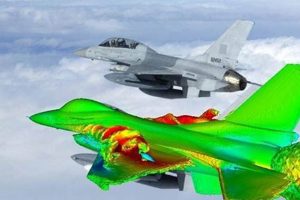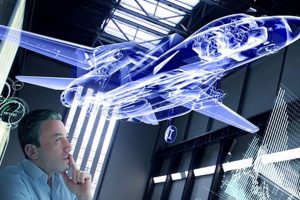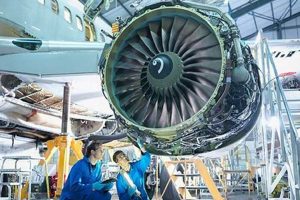This sector encompasses the various organizations and activities within Iran dedicated to the design, development, manufacturing, and maintenance of aircraft, spacecraft, and related components. It includes both civilian and military applications, ranging from commercial aviation to space exploration initiatives.
Its development is crucial for enhancing national security, fostering technological advancement, and stimulating economic growth through job creation and export opportunities. Historically, this sector has faced challenges related to international sanctions, prompting a focus on self-reliance and indigenous innovation to overcome limitations on accessing foreign technology.
The subsequent sections will delve into the specific capabilities, achievements, challenges, and future prospects of this strategically important element of the Iranian economy and technological landscape. This examination will cover areas such as aircraft production, satellite development, and research initiatives.
Strategic Considerations for Advancement
The advancement of this sector necessitates a multi-faceted approach, addressing technological, economic, and geopolitical factors. Prudent strategies are essential to maximize its potential and overcome existing constraints.
Tip 1: Prioritize Research and Development: Investment in fundamental and applied research is crucial for indigenous technological development. Collaborative projects with universities and research institutions can accelerate innovation and knowledge transfer.
Tip 2: Foster International Collaboration: Despite existing limitations, exploring opportunities for collaboration with nations willing to engage can provide access to advanced technologies and expertise, while carefully navigating geopolitical sensitivities.
Tip 3: Develop Skilled Human Capital: Investment in education and training programs to cultivate a highly skilled workforce is essential. This includes supporting specialized aerospace engineering programs and fostering practical experience through internships and apprenticeships.
Tip 4: Enhance Manufacturing Capabilities: Modernizing manufacturing infrastructure and adopting advanced manufacturing techniques are vital for producing high-quality components and systems. This includes investments in precision machining, composite materials, and additive manufacturing.
Tip 5: Focus on Niche Markets: Identifying and developing expertise in specific niche markets, such as unmanned aerial vehicles (UAVs) or satellite components, can provide a competitive advantage and generate export revenue.
Tip 6: Strengthen Cybersecurity Measures: Given the sensitive nature of this sector, robust cybersecurity measures are crucial to protect intellectual property and prevent cyberattacks. This includes implementing stringent security protocols and conducting regular vulnerability assessments.
Tip 7: Promote Public-Private Partnerships: Encouraging public-private partnerships can facilitate investment, innovation, and risk-sharing in the development of new aerospace technologies and products.
Adherence to these strategies can significantly bolster the capabilities of this sector, fostering self-sufficiency and contributing to economic growth. However, success hinges on sustained commitment and adaptability in a dynamic global environment.
The following section will provide concluding remarks, summarizing the key challenges and opportunities facing this industry.
1. Indigenous Manufacturing
Indigenous manufacturing is a cornerstone of the Iranian aerospace sector, reflecting a strategic emphasis on self-reliance in the face of international constraints. This focus involves the development and production of aircraft, components, and related technologies within Iran, utilizing domestic resources and expertise.
- Aircraft Production
This facet encompasses the assembly and potential design of fixed-wing and rotary-wing aircraft. Examples include the HESA Kowsar, a domestically produced jet fighter, and various attempts at reverse-engineering or adapting existing aircraft designs. This capability aims to fulfill military and civilian aviation needs while mitigating dependence on foreign suppliers.
- Component Fabrication
The domestic manufacturing of aerospace components, such as engines, avionics, and structural elements, is crucial for reducing reliance on external sources. This involves establishing specialized manufacturing facilities and developing expertise in materials science, precision engineering, and quality control. The success of this facet directly impacts the sustainability and cost-effectiveness of indigenous aerospace programs.
- Maintenance and Overhaul Capabilities
Independent maintenance, repair, and overhaul (MRO) services are essential for sustaining the operational readiness of existing aircraft fleets. Developing domestic MRO capabilities reduces reliance on foreign service providers and supports the long-term viability of aircraft operations within the country. This includes training skilled technicians and establishing specialized maintenance facilities.
- Research and Development Integration
The integration of research and development (R&D) efforts with manufacturing processes is vital for continuous improvement and innovation. This involves fostering collaboration between research institutions, universities, and manufacturing enterprises to develop new technologies and processes that enhance the performance and capabilities of domestically produced aerospace products. This synergy is critical for long-term competitiveness and technological advancement.
These interconnected facets of indigenous manufacturing are fundamental to the development and sustainability of the Iranian aerospace sector. By prioritizing domestic production, fostering technological innovation, and enhancing self-reliance, the industry seeks to overcome external challenges and establish a robust foundation for future growth.
2. Satellite Development
Satellite development represents a critical and strategically important component of the Iranian aerospace sector. It showcases the industry’s ambition and capabilities in space technology, driven by both scientific and strategic considerations. This facet encompasses the design, construction, launch, and operation of satellites for various purposes.
- Satellite Design and Engineering
This involves the conceptualization, detailed design, and engineering of satellites tailored for specific missions. Examples include communication satellites, remote sensing satellites, and scientific research satellites. This capability requires expertise in areas such as orbital mechanics, thermal management, power systems, and communication systems. Successful satellite design is essential for achieving mission objectives and ensuring reliable operation in the space environment.
- Satellite Manufacturing and Assembly
The manufacturing and assembly of satellites involve the fabrication of components, integration of subsystems, and testing of the complete satellite system. This requires advanced manufacturing facilities, precision engineering capabilities, and stringent quality control processes. The ability to indigenously manufacture satellites reduces reliance on foreign suppliers and enhances national self-sufficiency in space technology.
- Launch Vehicle Development
The development of launch vehicles, such as the Simorgh rocket, is crucial for placing satellites into orbit. This involves the design, construction, and testing of multistage rockets capable of delivering satellites to the desired altitude and inclination. Launch vehicle development is a complex and challenging endeavor, requiring expertise in propulsion systems, aerodynamics, and control systems. Successful launch vehicle development provides independent access to space and enhances national prestige.
- Ground Station Infrastructure
Ground station infrastructure is essential for controlling and communicating with satellites in orbit. This includes facilities for tracking satellites, receiving telemetry data, and transmitting commands. Ground stations provide the vital link between satellites and ground-based operators, enabling the effective utilization of satellite data and services. A robust ground station network is necessary for supporting satellite operations and ensuring mission success.
These elements of satellite development demonstrate the breadth and depth of capabilities within the Iranian aerospace sector. While facing challenges related to international sanctions and technological constraints, continued investment in these areas is strategically important for advancing national interests in space exploration and utilization. These efforts contribute to the development of scientific knowledge, enhance national security, and promote economic growth.
3. Military Applications
Military applications constitute a significant driver for the Iranian aerospace sector, influencing research priorities, technological development, and production capabilities. The geopolitical context and regional security dynamics necessitate a focus on defense-related aerospace technologies.
- Development of Unmanned Aerial Vehicles (UAVs)
The development and deployment of UAVs for reconnaissance, surveillance, and combat roles are a prominent aspect. These systems, ranging from small tactical drones to larger, more sophisticated models, provide enhanced situational awareness and strike capabilities. Examples include the Shahed-136 loitering munition. The emphasis on UAV technology stems from its cost-effectiveness and versatility in asymmetric warfare scenarios.
- Production of Military Aircraft
The indigenous production of military aircraft, including fighter jets and training aircraft, is a key objective. While facing challenges in acquiring advanced foreign technology, the Iranian aerospace sector has pursued initiatives to reverse-engineer or locally produce aircraft designs, such as the HESA Kowsar. These efforts aim to bolster national defense capabilities and reduce reliance on external suppliers.
- Development of Air Defense Systems
Air defense systems, including surface-to-air missiles (SAMs) and radar technologies, are crucial for protecting critical infrastructure and airspace. The Iranian aerospace sector has invested in the development and production of advanced air defense systems, such as the Bavar-373, to counter potential aerial threats. These systems represent a significant component of Iran’s defense strategy.
- Modernization of Existing Military Aircraft
The modernization and upgrade of existing military aircraft fleets through the integration of advanced avionics, weapons systems, and electronic warfare capabilities are essential for maintaining operational effectiveness. This includes retrofitting older aircraft with new technologies and enhancing their performance characteristics. Such efforts are aimed at extending the lifespan and enhancing the capabilities of existing assets.
These military applications highlight the strategic importance of the aerospace sector in supporting Iran’s defense objectives. The emphasis on indigenous production, technological innovation, and self-reliance underscores the sector’s role in ensuring national security within a complex geopolitical environment. Furthermore, developments in the Iranian Aerospace industry impact the regional powers relationship through exports of military and non-military products.
4. International Sanctions
The imposition of international sanctions has profoundly impacted the Iranian aerospace sector, acting as a major impediment to its growth and development. These sanctions, primarily imposed by the United States and the European Union, restrict access to advanced technologies, equipment, and expertise necessary for the advancement of civilian and military aerospace programs. The consequences are far-reaching, affecting everything from aircraft maintenance and modernization to satellite development and research initiatives. The restrictions limit the ability to acquire crucial components, such as aircraft engines, avionics systems, and specialized materials, leading to operational challenges and technological stagnation. For example, the inability to purchase new aircraft or critical spare parts has hindered the modernization of Iran’s commercial aviation fleet and compromised safety standards.
Furthermore, sanctions have disrupted international collaborations and partnerships, isolating the industry from global advancements and best practices. The restrictions on technology transfer and foreign investment limit the industry’s capacity to innovate and compete on a global scale. The impact extends to the space sector, where sanctions impede the acquisition of advanced satellite components and launch technologies. This has affected Iran’s ability to develop and deploy satellites for communication, remote sensing, and scientific research. Despite these challenges, the Iranian aerospace sector has pursued strategies of self-reliance, investing in indigenous manufacturing and research initiatives to overcome the limitations imposed by sanctions. However, these efforts face significant hurdles due to the complexity and capital-intensive nature of aerospace technology.
In summary, international sanctions represent a substantial obstacle to the development of the Iranian aerospace sector, restricting access to critical resources, disrupting international collaborations, and hindering technological advancement. While the industry has responded with efforts toward self-sufficiency, the long-term impact of sanctions remains a significant challenge. Understanding the interplay between sanctions and the aerospace sector is vital for analyzing the industry’s trajectory and the broader implications for Iran’s technological capabilities and economic development.
5. Research Initiatives
Research initiatives form a vital component within the Iranian aerospace sector, acting as the primary engine for technological advancement and self-sufficiency. These initiatives encompass a broad spectrum of activities, ranging from fundamental scientific investigations to applied engineering projects, all aimed at enhancing the capabilities and competitiveness of the industry. The connection is causal: investment in research directly fuels innovation in aircraft design, propulsion systems, materials science, and satellite technologies. The absence of robust research programs would invariably lead to technological stagnation, perpetuating reliance on foreign sources and undermining national security objectives.
The significance of research is evident in several key areas. For instance, universities like Sharif University of Technology and Amirkabir University of Technology play pivotal roles in conducting cutting-edge research in aerospace engineering, contributing to advancements in areas such as computational fluid dynamics, composite materials, and guidance and control systems. These research outputs have directly supported the development of indigenous aircraft, such as the HESA Kowsar, and satellite launch vehicles, like the Simorgh. Furthermore, research initiatives are essential for overcoming the limitations imposed by international sanctions. By focusing on domestic innovation, the industry seeks to develop substitutes for restricted technologies and enhance its resilience to external pressures. The practical significance of understanding this connection lies in recognizing the strategic importance of sustained investment in aerospace research. This investment is not merely an expenditure but a crucial element for achieving long-term technological independence and economic growth within the sector.
In conclusion, research initiatives are inextricably linked to the progress and future prospects of the Iranian aerospace sector. These initiatives drive innovation, foster self-reliance, and enhance competitiveness. While the sector faces challenges, continued investment in research remains crucial for sustaining technological advancement and achieving strategic objectives. A comprehensive understanding of this dynamic is essential for policymakers, industry stakeholders, and researchers alike, as it informs strategic decisions and guides resource allocation to maximize the potential of the Iranian aerospace industry.
Frequently Asked Questions
This section addresses common queries regarding the capabilities, challenges, and future of this sector.
Question 1: What are the primary areas of focus within the Iranian aerospace sector?
The sector concentrates on indigenous aircraft production, satellite development and launch capabilities, the manufacturing of unmanned aerial vehicles (UAVs), and the development of air defense systems. Emphasis is placed on self-reliance due to international sanctions.
Question 2: How have international sanctions affected the Iranian aerospace industry?
Sanctions have significantly restricted access to advanced technologies, components, and expertise, hindering the modernization of aircraft fleets and the development of advanced aerospace systems. This has led to a greater emphasis on domestic production and research initiatives.
Question 3: What role do research and development play in this sector?
Research and development are vital for overcoming technological limitations and achieving self-sufficiency. Universities and research institutions conduct research in areas such as aerospace engineering, materials science, and propulsion systems, contributing to indigenous innovation.
Question 4: What are the main challenges facing the Iranian aerospace industry?
The key challenges include limited access to advanced technologies, skilled personnel shortages, inadequate funding for research and development, and the impact of international sanctions on supply chains and international collaborations.
Question 5: What are some notable achievements of the Iranian aerospace industry?
Notable achievements include the development of the HESA Kowsar jet fighter, the launch of indigenous satellites into orbit using Iranian-made launch vehicles, and the production of various UAV models for military and civilian applications.
Question 6: What are the future prospects for the Iranian aerospace industry?
The future prospects depend on factors such as the easing of international sanctions, increased investment in research and development, and the cultivation of a skilled workforce. The industry aims to expand its capabilities in satellite technology, aircraft manufacturing, and the development of advanced aerospace systems.
These answers provide an overview of the complexities and potential of this sector. Continued monitoring and analysis are essential for understanding its evolving role within Iran’s economy and technological landscape.
The following section will provide concluding remarks and final assessment.
Conclusion
The examination of the Iranian aerospace industry reveals a sector characterized by both significant ambition and considerable constraint. This sector’s focus on indigenous production, evidenced by initiatives in aircraft manufacturing, satellite development, and UAV production, stems largely from necessity imposed by international sanctions. Research and development serve as critical mechanisms to circumvent technological limitations, but progress is impeded by restricted access to advanced technologies and limited international collaboration.
Continued scrutiny of this sector is warranted due to its strategic implications for regional security, technological advancement, and economic self-reliance. Understanding the interplay between domestic capabilities, external pressures, and evolving geopolitical dynamics remains crucial for informed assessment of its future trajectory and broader implications.







